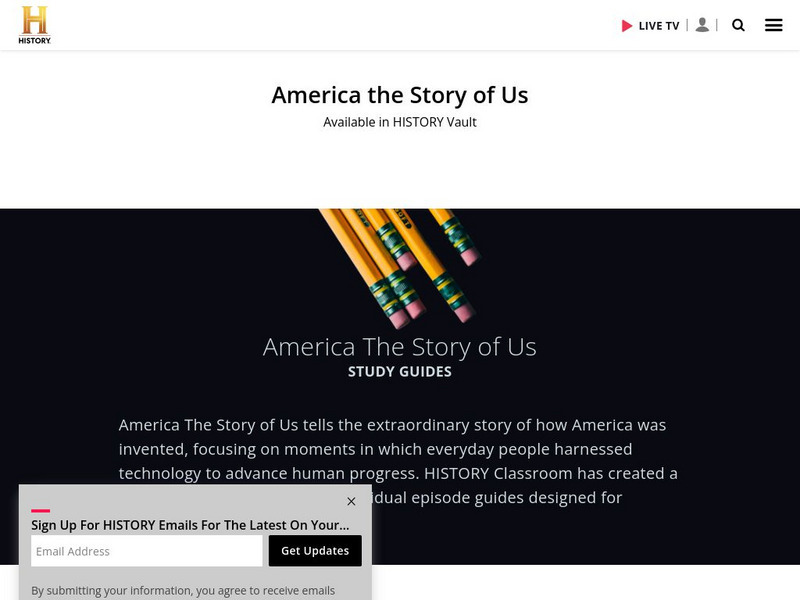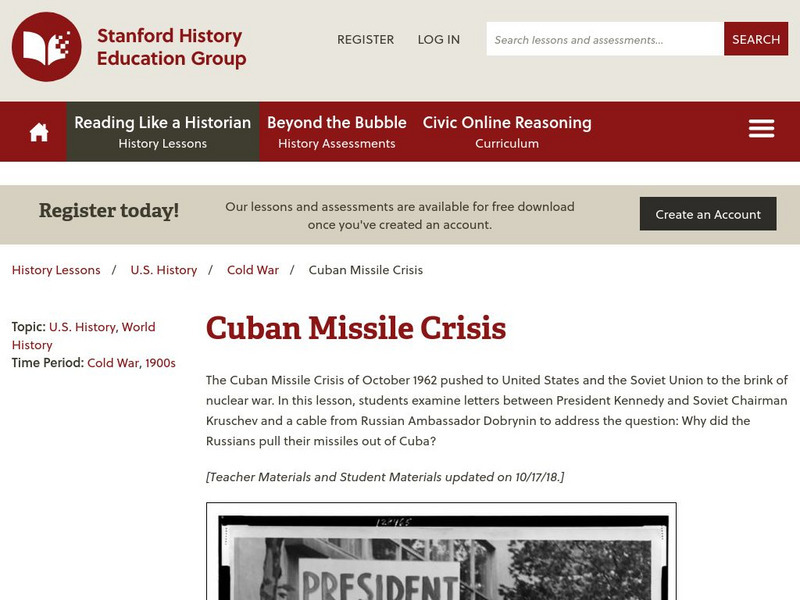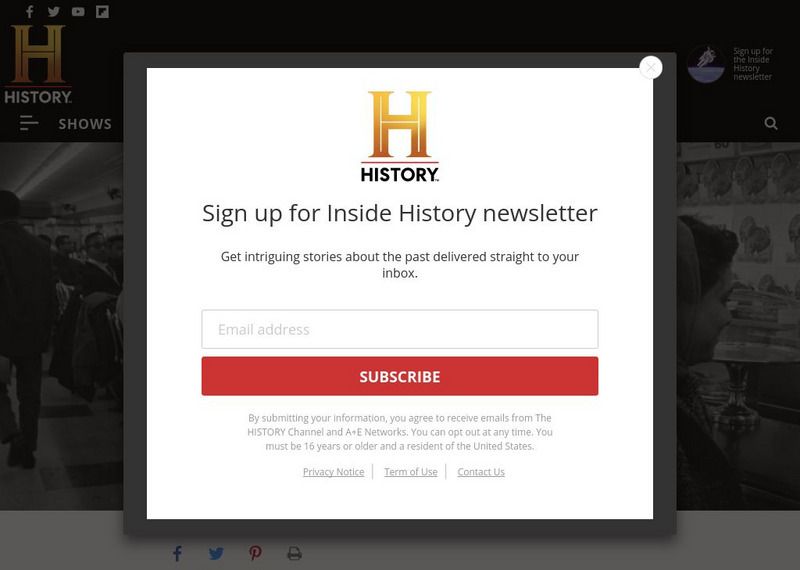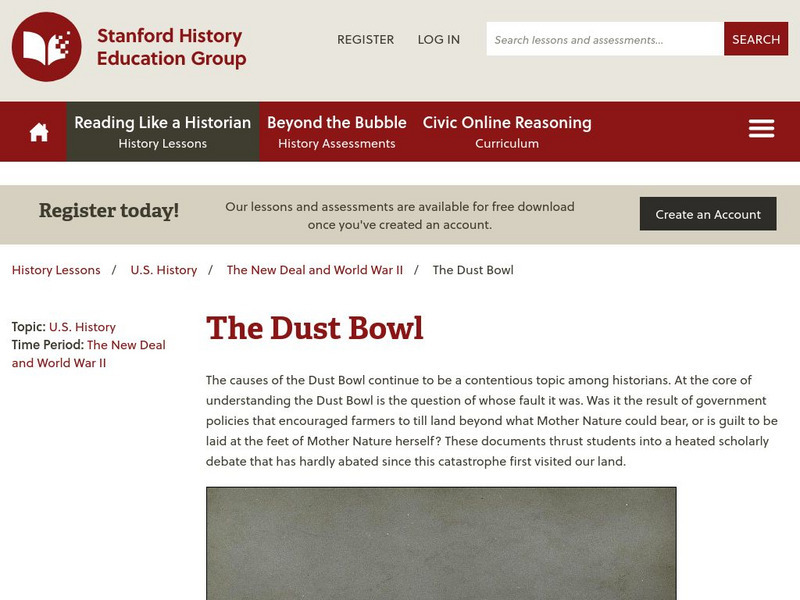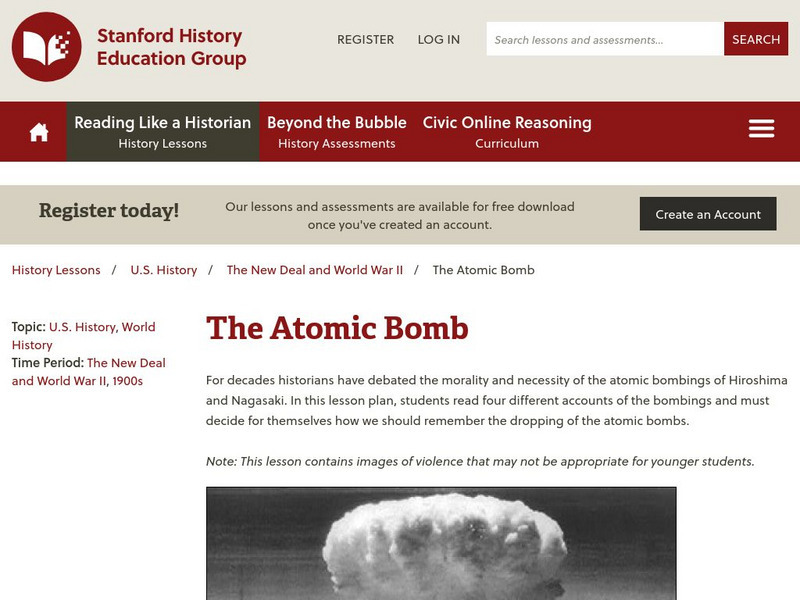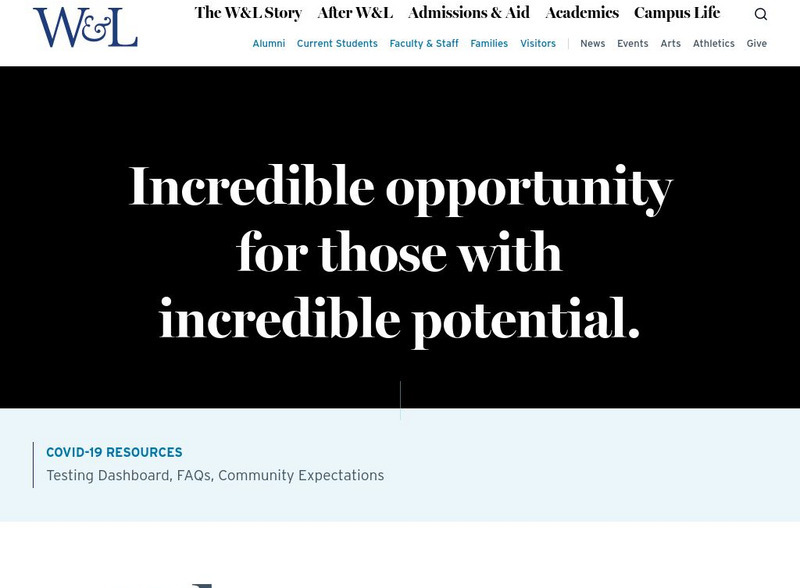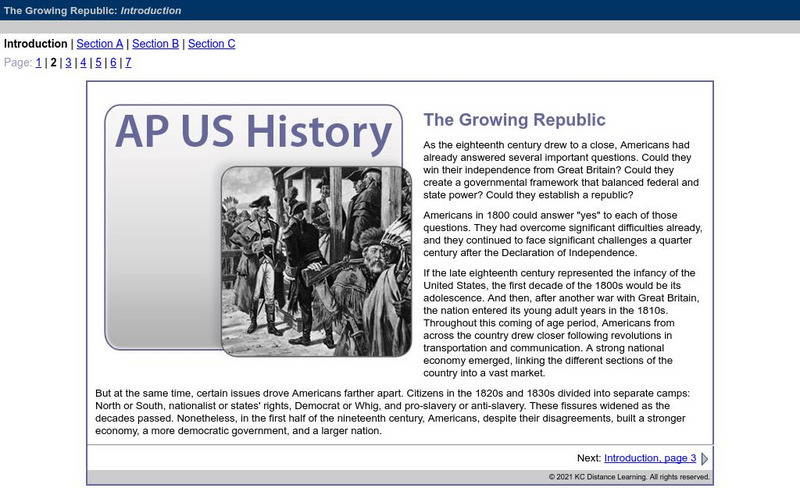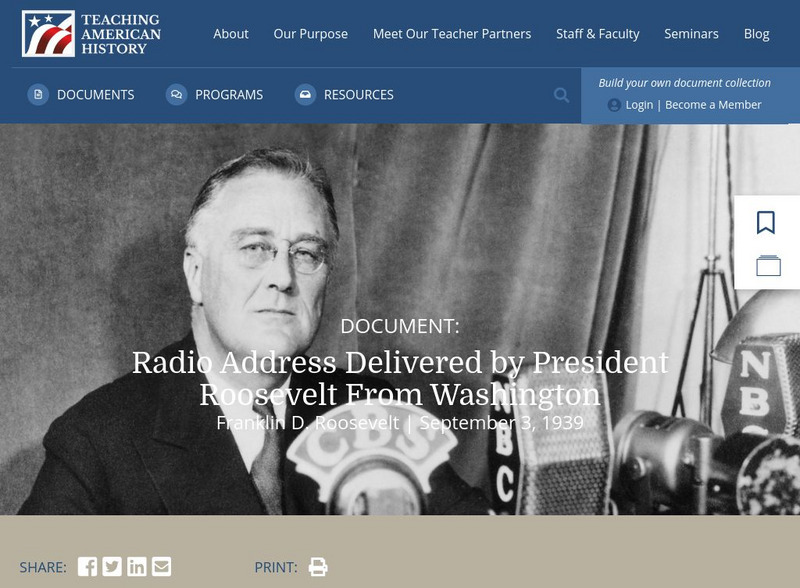A&E Television
History.com: America the Story of Us Study Guides
A collection of study guides to accompany each of twelve episodes of a series on United States history called America The Story of Us. Each episode focuses on major events, turning points, wars, time periods, etc. The study guides...
Other
National Atlas of the United States
The National Atlas of the United States provides comprehensive information collected by the Federal Government and delivered through interactive maps. Select from a variety of scientific, societal, and historical information to be...
Other
Fieldston School United States History Survey: Rugged Individualism Speech
Herbert Hoover closed his 1928 presidential campaign with this speech, an expression of the Republican Party's philosophy of rugged individualism.
Ducksters
Ducksters: Arizona State History for Kids
Students can learn about the history and timeline of the state of Arizona including early explorers, Native Americans, the Wild West, and how it became a part of the United States on this website.
PBS
Pbs Learning Media: Montana: Give Me Liberty the Montana State Constitution
Compare the meanings of "freedom" and "liberty." Students watch a video about what liberty meant to Thomas Jefferson, then consider different definitions of the word "liberty" by analyzing founding documents of both the United States and...
Khan Academy
Khan Academy: Ap Us History/college History: United States Enters World War I
The study resource from Khan Academy provides a video for Period 7: 1890-1945 in American History. This section discusses America's entry into World War I. This resource is designed as a review for the AP US History Test.
Stanford University
Stanford History Education Group: Castro and the United States
[Free Registration/Login Required] Lesson in which students analyze primary source material to consider different ways Castro viewed the United States. Includes teacher materials, student materials, PowerPoint and original documents.
San Diego State University
World History for Us All: Two Big Powers and Their Cold War 1945 1990 [Pdf]
After completing this unit, students will be able to describe major differences in the political ideologies of the United States and the Soviet Union, explain the causes of the Korean War and the Cuban Missile Crisis, and explain how...
Stanford University
Sheg: Document Based History: Reading Like a Historian: Cuban Missile Crisis
[Free Registration/Login Required] After reviewing documents related to United States and Soviet Union national leadership, students will discuss the reasons Russia extracted their missiles from Cuba.
American Presidency Project
American Presidency Project: State of the Union Addresses and Messages
This site compiles all of the State of the Union addresses and messages by all the presidents in U.S. history (except William Henry Harrison and James A. Garfield).
A&E Television
History.com: Greensboro Sit Ins
The Greensboro Sit-In was a critical turning point in Black history and American history, bringing the fight for civil rights to the national stage. Its use of nonviolence inspired the Freedom Riders and others to take up the cause of...
Other
American Coal Foundation: Lesson Plan: History of Coal in the u.s.
Students will learn about the history of coal mining in the United States by examining a timeline of key dates. In this two-part lesson, they will do research to discover why the coal industry is important to the economy and what types...
Stanford University
Sheg: Document Based History: Reading Like a Historian: The Dust Bowl
[Free Registration/Login Required] The Dust Bowl of the 1930's in the United States is often a topic of great debate. What caused the phenomenon of storms? Was it the government or Mother Nature or a combination of the two? This lesson...
Stanford University
Sheg: Document Based History: Reading Like a Historian: The Atomic Bomb
[Free Registration/Login Required] How necessary was it for the United States to drop the atomic bombs on Nagasaki and Hiroshima in World War II? In this lesson, learners will study varying accounts and develop their own opinions of...
Stanford University
Sheg: Document Based History: Reading Like a Historian: Montgomery Bus Boycott
[Free Registration/Login Required] After reviewing four documents, learners will consider the deeper meaning behind the bus boycott while studying the Civil Rights Movement in the United States.
Other
Zinn Education Project: Teaching a People's History
A project designed for teachers using Howard Zinn's People's History of the United States to teach American history, but with broader applicability in any US history classroom where the role of working people, women, social movements and...
Other
Washington and Lee University: Black History Month: Maggie Lena Walker
Maggie L. Walker was the first female bank president of the United States. Learn about the life and work of this African American teacher and entrepreneur. This brief biography includes accompanying audio [1:49], as well as a...
Department of Defense
Do Dea: Ap Us History: Unit 7: Facing Challenges at Home and Abroad
This extensive learning module examines the role of economic fluctuations in creating new demands on the government to design reforms and how the United States became a dominant military, political, cultural, and economic force in the...
Constitutional Rights Foundation
Constitutional Rights Foundation: Leadership: u.s. History
Lesson and activity looks at leadership in U.S. history focussing on presidents, past and present, to determine what makes a good leader. Questions for discussion and class activity guidelines included.
Department of Defense
Do Dea: Ap Us History: Unit 3: The Growing Republic
This extensive learning module examines how the United States' efforts to increase foreign trade, add new territory, and isolate itself from Europe affected its foreign policy and other initiatives. It investigates how advances in...
Smithsonian Institution
National Museum of American History: Teaching Math & Science in Age of Sputnik
Why did the Soviet Union's launch of Sputnik throw the fields of mathematics and science into tremendous demand in the United States? Find the many ways this revolutionary event impacted children from the 1950s to become the...
Teaching American History
Teaching American History: Fdr: Radio Address Delivered From Washington
A transcript of a radio address delivered from Franklin D. Roosevelt from Washington telling the nation that he hopes that the United States will not enter the war in Europe.
National Women’s History Museum
National Women's History Museum: Martha Washington
Biographical account of the life of Martha Dandridge Custis Washington, the first First Lady of the United States.
National Women’s History Museum
National Women's History Museum: Dolley Madison
Dolley Madison, the fourth First Lady of the United States, is widely remembered as the most lively of the early First Ladies.
